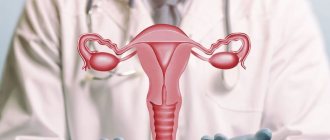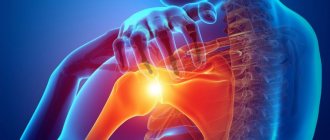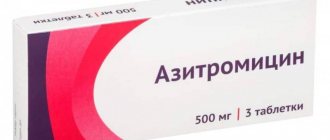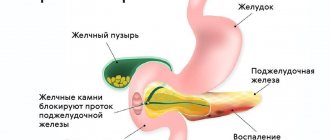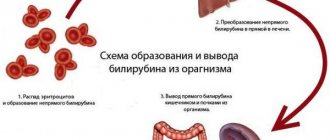Zoladex is a pharmacological drug actively used in oncology and gynecology. The drug is used in the treatment of pathologies that develop against the background of hormonal imbalance. It has proven itself in the treatment of prostate and breast cancer, endometriosis, as well as in the desensitization of the pituitary gland before IVF. The list of contraindications for the drug is quite wide, and side effects may occur during therapy. Therefore, it is advisable to use Zoladex only as prescribed by a doctor. You can buy antitumor drugs in our pharmacy.
Composition and release form
| Capsules for subcutaneous administration of prolonged action | 1 caps. |
| active substance: | |
| goserelin acetate (in terms of goserelin base) | 10.8 mg |
| excipients: low molecular weight lactic and glycolic acid copolymer (95:5) and high molecular weight lactic and glycolic acid copolymer (95:5) - up to a total weight of 36 mg (weight ratio between low molecular weight and high molecular weight copolymer - 3:1) |
In a syringe applicator with a protective mechanism ( Safety Glide
) 1 capsule for subcutaneous administration of prolonged action, 10.8 mg. 1 syringe applicator is placed in a laminated aluminum envelope, the envelope is placed in a cardboard box.
Pharmacodynamics
A synthetic analogue of natural GnRH. With continuous use, the drug Zoladex® inhibits the release of LH by the pituitary gland, which leads to a decrease in the concentration of testosterone in the blood serum in men and the concentration of estradiol in the blood serum in women. This effect is reversible after discontinuation of therapy. Initially, Zoladex®, like other GnRH agonists, may cause a temporary increase in serum testosterone concentrations in men and serum estradiol concentrations in women. In the early stages of therapy with Zoladex®, some women may experience vaginal bleeding of varying duration and intensity.
In men, by approximately the 21st day after administration of the first capsule, the concentration of testosterone decreases to castration levels and continues to remain reduced with continuous treatment every 3 months in the case of Zoladex® 10.8 mg. This decrease in testosterone concentration during the use of Zoladex® 10.8 mg in most patients leads to regression of the prostate tumor and symptomatic improvement.
After administration of Zoladex® 10.8 mg, serum estradiol concentrations in women decrease within 4 weeks after administration of the first capsule and remain reduced to a level comparable to that observed in menopausal women. With the initial use of other GnRH analogues and switching to Zoladex® 10.8 mg, suppression of estradiol levels is maintained. Suppressing the level of estradiol leads to a therapeutic effect in endometriosis and uterine fibroids.
While taking GnRH agonists, women may experience menopause. Rarely, some women do not return to menstruation after finishing therapy.
Pharmacokinetics
Administration of the capsule every 12 weeks ensures that effective concentrations are maintained. Cumulation in tissues does not occur. The drug Zoladex® binds poorly to protein, T1/2 of it from blood serum is 2-4 hours in patients with normal renal function. T1/2 increases in patients with impaired renal function. When Zoladex® 10.8 mg is administered every 12 weeks, this change will not have a significant effect, so there is no need to change the dose for these patients. In patients with liver failure, significant changes in pharmacokinetics are not observed.
Instructions for use
Single doses are calculated by a gynecologist or oncologist taking into account the type of pathology, its severity, and the severity of symptoms. The doctor must take into account the patient’s age and the presence of other chronic diseases. But usually, elderly people and patients suffering from kidney or liver failure do not require dosage adjustment.
During the treatment procedure, the capsule is injected subcutaneously into the anterior abdominal wall using a syringe. If necessary, it is repeated every four weeks. The duration of the therapeutic course for gynecological pathologies with a benign course is six months. For patients with cancer, Zoladex is indicated for treatment for a year or more. During preoperative preparation, the drug is administered twice with a time interval of 28 days. Surgical destruction of the endometrium by controlled thermal or laser exposure is recommended to be performed within the first two weeks after the 2nd injection.
Side effects
The frequency of occurrence of undesirable effects is presented as follows: often (>1/100, <1/10); uncommon (>1/1000, <1/100); rare (>1/10,000, <1/1000); very rare (<1/10,000), including isolated reports.
Neoplasms:
very rarely - pituitary tumor; unspecified frequency - degeneration of fibromatous nodes in women with uterine fibroids.
From the immune system:
uncommon - hypersensitivity reactions; rarely - anaphylactic reactions.
From the endocrine system:
very rarely - hemorrhage into the pituitary gland.
Metabolic disorders:
often - impaired glucose tolerance. Decreased glucose tolerance was observed in men receiving GnRH agonists. Decreased glucose tolerance was manifested by the development of diabetes mellitus or worsening blood glucose control in patients with a history of diabetes mellitus; infrequently - hypercalcemia (in women).
From the nervous system and mental sphere:
very often - decreased libido associated with the pharmacological action of the drug and in rare cases, leading to its withdrawal; often - decreased mood, depression (in women), paresthesia, spinal cord compression (in men), headache (in women); very rarely - psychotic disorder.
From the SSS side:
very often - hot flashes associated with the pharmacological action of the drug and in rare cases leading to its withdrawal; often - myocardial infarction (in men); heart failure (in men), the risk of which increases with the simultaneous administration of antiandrogen drugs. Changes in blood pressure levels, manifested as hypotension or hypertension. These changes are usually transient and resolve either during therapy with Zoladex® or after its cessation. In rare cases, these changes required medical intervention, including discontinuation of Zoladex®.
From the skin and subcutaneous tissue:
very often - increased sweating associated with the pharmacological effect of the drug and in rare cases leading to its withdrawal; often - alopecia (in women), usually slightly pronounced, incl. in young patients with benign neoplasms; the rash was mostly mild and often resolved with continued therapy; unspecified frequency - alopecia (in men), which manifested itself as hair loss throughout the body due to a decrease in androgen levels.
From the musculoskeletal system:
often - arthralgia (in women), bone pain (in men). At the beginning of treatment, prostate cancer patients may often experience a temporary increase in bone pain, which is treated symptomatically; infrequently - arthralgia (in men).
From the genitourinary system:
very often - erectile dysfunction (in men), dryness of the vaginal mucosa and an increase in the size of the mammary glands (in women); often - gynecomastia (in men); infrequently - soreness of the mammary glands (in men), obstruction of the ureters (in men); rarely - ovarian cyst (in women); unspecified frequency - vaginal bleeding (in women).
Other:
very often - a reaction at the injection site (in women); often - a reaction at the injection site (in men).
Laboratory research:
often - decreased bone mineral density, increased body weight.
It is known that manufacturers, when developing and researching new medicines, are guided mainly by the expected medical effect from the implementation of their inventions. However, in addition to therapeutic effectiveness, there is also the concept of cost-effectiveness. When choosing a specific treatment option, both of these factors must be taken into account, especially in cancer patients.
In the structure of cancer incidence among men in Russia, prostate cancer (PCa) ranks 4th. It is important to note that the incidence of prostate cancer has more than doubled over the past 10 years, and its growth rate is the highest among all cancers in men. Treatment of patients with prostate cancer requires significant budgetary expenditures and more than 50% of the cost of treatment occurs in the last few years of their life, when the bulk of patients receive palliative treatment. The main palliative treatment option for patients with prostate cancer is hormonal therapy.
The purpose of the pharmacoeconomic study was to determine the cost-effectiveness of various options for hormonal therapy for prostate cancer.
Relevance of the topic
Prostate cancer is one of the most common types of cancer in men in Western countries. Treatment options depend on the stage and degree of progression of the disease at diagnosis [1]. For advanced stages of the disease, surgical orchidectomy and hormonal castration are effective palliative treatment options. The most justified method of hormonal castration from the point of view of therapeutic effectiveness is the use of luteinizing hormone-releasing hormone (LHRT) agonists.
Table 1. Prices for drugs (iMs Health Russia, February 2010) in rubles
| trade name | average price | price 1 month treatment | price for 1 year of treatment |
| Zoladex 10.8 mg | 22 959,45 | 7653,1 5 | 91 837,80 |
| Buserelin depot 3.75 mg | 8217,58 | 8217,58 | 98 610,96 |
| Diferelin 3.75 mg | 10 448,32 | 10 448,32 | 125 379,84 |
| Zoladex 3.6 mg | 9266,27 | 9266,27 | 111 195,24 |
| Lucrin depot 3.75 mg | 8696,90 | 8696,90 | 104 362,80 |
| Eligard 7.5 mg | 8488,00 | 8488,00 | 101 856,00 |
| Eligard 22.5 mg | 19 718,00 | 6572,67 | 78 872,00 |
| Eligard 45 mg | 29 660,00 | 4943,33 | 59 320,00 |
| Venlafaxine (average price per pack) | 29,4 | 854 |
Several drugs from the group of LHRT agonists are available in Russia with different efficacy rates and different frequencies of use.
The purpose of this study was to determine how these differences, along with different prices for LHRT agonists, affect the total annual cost of treatment using all three forms of Eligard (1, 3 and 6 months) compared with traditional LHRT agonists (Zoladex 1 and 3 month forms, Buserelin 1 month form, Lucrin depot 1 month form and Diferelin 1 month form). This approach is also known as cost minimization analysis. Materials and methods
In this study, an analytical method using TreeAge® software was used to compare 1-month, 3-month and 6-month formulations. The study followed the same methodology as Odeyemi et al (2007).
The following data were used for analysis in the study:
- the frequency of injections differed for different forms of drugs. All patients in different groups during a year's visit to the doctor received 12 injections (for 1-month forms of drugs), 4 injections (for 3-month forms) and 2 injections (for 6-month forms);
- the number of doctor visits depended on the frequency of injections of the corresponding drug;
- treatment of side effects, primarily hot flashes, was carried out using the drug Venlafaxine;
- the cost of the various drugs listed above was determined based on the average price on the Russian market. The time period for analysis was 12 months;
- the cost of the drugs is shown in Table 1. In addition, the cost of visiting a doctor for an injection of the drug averaged 3,900 rubles per visit (financing standards approved by the Government of the Russian Federation).
Clinical efficacy data were taken from the following multicenter published studies: Eligard: Perez-Marreno, 2003; Chu FM et al., 2002; Crawford et al., 2006; Zoladex: Vogelzang et al., 1995; Lucrin and other forms of leuprorelin: Heyns et al., 2003; Alloul et al., 1998; Buserelin: Alloul et al., 1998.
The following clinical data were used in the study, based on a meta-analysis of existing data and the results of other clinical studies [3, 4, 5, 7, 8]:
- Eligard 7.5, 22.5 and 45 mg are effective in reducing testosterone levels below the traditional 50 ng/dL in almost all patients (98-100%), with the majority of patients (88-98%) even achieving levels of 20 ng /dl or less;
- When using goserelin (Zoladex) for 12 months, 88% of patients achieve testosterone levels <50 ng/dL;
- when using Buserelin for 12 months, 85% of patients achieve testosterone levels <50 ng/dL;
- when using various forms of Leuprorelin after 28 days, 85.2% of patients achieve testosterone levels <20 ng/dl;
- all patients achieve testosterone levels comparable to castration after 12 months of treatment;
- it is assumed that about 2.5% of patients will stop treatment within 1 year, and therefore will receive half the treatment dose compared to patients who complete treatment;
- the only side effect that is taken into account is hot flashes in 0-8% of patients, only 50% of which will require treatment with Venlafaxine 75 mg.
RESULTS
An economic analysis of the annual cost of treatment with various LHRT analogues demonstrated the fundamental influence of two factors: the price of the drug and the frequency of injections. The less often the injections are performed and, accordingly, the less often the patient visits the doctor, the lower the annual cost of treatment (Table 2). For example, over the course of 1 year, 2 injections of a 6-month form of Eligard cost less than 4 injections of a 3-month form of Eligard, which, in turn, will be cheaper than 12 injections of a 1-month form of this drug: 57,184; 76,861 and 100,583 rubles respectively.
The use of the 6-month form of Eligard is associated with a reduction in the number of visits to the doctor by up to 2 during the year, compared with the 3-month form of the drug (saving 7800 rubles) and by 10 visits, compared with the 1-month form (saving 39,000 rubles). Savings of about 39,000 rubles will be observed when comparing the 6-month form of Eligard with any other 1-month form of the LHRT analogue.
Table 2. Average cost of annual treatment with various LHRT analogues
| drugs | annual cost (drugs only) | total annual cost (incl. LPE + Visits) |
| Eligard 6 month old | 57 184 | 61 883 |
| Eligard 3 month old | 76 861 | 85 910 |
| Zoladex 3 month | 90 690 | 99 860 |
| Buserelin 1 month | 97 378 | 1 10 399 |
| Eligard 1 month | 100 583 | 126 625 |
| Lucrin 1 month | 103 058 | 129101 |
| Zoladex 1 month | 109 805 | 135 848 |
| Diferelin 1 month | 1 23 81 3 | 149 853 |
| |* LPE treatment of side effects | | ||
Similarly, 4 injections of a 3-month form of Zoladex cost less than 12 injections of a 1-month form of Zoladex (90,690 and 109,805 rubles, respectively), which is associated with a decrease in the number of visits to the doctor by 8 during the year (savings of 31,200 rubles) .
The results of the study showed that the use of the 6-month form of Eligard is the least expensive type of treatment with a total annual cost of about 61,883 rubles. This is the only 6-month form of the drug in Russia, the use of which is economically justified compared to drugs with more frequent injections.
The 3-month form of Eligard is the second least expensive treatment option (total annual cost is 85,910 rubles), while the cost of using the 3-month form of Zoladex, another 3-month form of the LHRT analogue, reaches 99,860 rubles. In general, the use of 3-month forms of drugs is less expensive than 1-month forms of drugs.
The one-month form of Eligard ranks only 5th in terms of the lowest cost of annual treatment for prostate cancer among the treatment options under consideration (total annual cost 126,625 rubles). However, it is important to note that this is one of the cheapest treatment options compared to other 1-month forms of drugs (the total annual cost ranges from 129,101 to 149,853 rubles).
Budget savings
The study showed that budget savings when switching to the use of the 6-month form of Eligard will amount, on average, to 50,552 rubles per patient during the year, with a range from 24,027 to 87,970 rubles. In other words, budget savings when transferring 1000 patients from existing drugs to the 6-month form of Eligard will exceed 50 million rubles per year or 250 million rubles over 5 years.
Conclusion
The study shows that, taking into account the current prices for drugs from the group of LHRT analogues in Russia, the drug Eligard has a number of advantages compared to other drugs currently on the market. The study was able to prove the following points:
- the use of Eligard 45 mg (6-month form) is a treatment with the greatest cost-effectiveness compared to all other forms of LHRT analogues without any damage to therapeutic effectiveness;
- the minimum cost of using Eligard 45 mg is due to the high effectiveness of therapy, the minimum price of monthly treatment, as well as a decrease in the number of visits by patients to medical institutions (only 2 visits during the year);
- The current price for Eligard 45 mg is optimal in terms of cost/effectiveness ratio, because the overall cost of treatment is reduced when optimal control over tumor progression is achieved;
- The 3-month form of Eligard has a good cost/effectiveness ratio and is in second place in terms of the lowest cost of treatment, in particular, being a cheaper form than the 3-month depot form of Zoladex;
- one-month forms of different drugs of LHRT analogues have comparable costs, but Eligard demonstrates the best cost/effectiveness ratio;
- budget savings when switching to the use of a 6-month form of Eligard amount to, on average, 50,552 rubles per patient per year.
Key words: prostate cancer, pharmacoeconomics, hormonal therapy, LHRT agonists, Eligard. Keywords : prostate cancer, pharma-ernomic aspects, hormone therapy, LHRH agonist, Eligard.
Literature
- Schulman CC Introduction and summary. European Urology Supplements. 2005.4:1-3.
- Odeyemi IAO et al. Economic Impact of different preparations of leprolide acetate in the management of advanced prostate cancer. J Med Econ. 2007. 10:135-146.
- Perez-Marreno R. et al. A six-month, open-label study assessing a new formulation of leuprolide 7.5mg for suppression of estosterone in patients with prostate cancer. Clinical Therapeutics. Nov. 2002. 24 (11): 1902-13.
- Vogelzang NJ et al.. Goserelin versus orchiectomy in the treatment of advanced prostate cancer: final results of a randomized trial. Urology. 1995. 46(2): 220-226.
- Heyns CF et al. Comparative efficacy of triptorelin and leuprolide acetate in men with advanced prostate cancer. BJU International. 2003 92 (3): 226-231.
- Chu F. M. et al. A clinical study of 22.5mg. La-2550: a new subcutaneous depot delivery system for leuprolide acetate for the treatment of prostate cancer. J Urol. 2002. 168(3): 1199-1203.
- Crawford DE et al. A 12-month clinical study of La-2585 (45mg): a new 6-month subcutaneous delivery system for leuprolide acetate for the treatment of prostate cancer. J Urol. 2006. 175 533-536.
- Alloul et al. Meta-analysis and economic evaluation of LHRH agonists' depot formulations in advanced prostatic carcinoma. The Canadian Journal of Urology. 1998. 5 (3): 585-94.
| Attached file | Size |
| Article in PDF format | 699.42 kb |
‹ On the effectiveness of α1-blockers in the correction of dysuria after radiation therapy for prostate cancer Up The use of the prostate peptide complex uroprost in patients with impaired urine outflow from the bladder ›
special instructions
Caution should be exercised when prescribing Zoladex® to males at particular risk of ureteral obstruction or spinal cord compression. These patients should be closely monitored during the first month of therapy. If spinal cord compression or renal failure due to ureteral obstruction occurs or develops, standard treatment for these complications should be prescribed.
In women, Zoladex® 10.8 mg is indicated only for the treatment of endometriosis and uterine fibroids. For women requiring treatment with goserelin for other indications, Zoladex® 3.6 mg is used.
When using Zoladex® in women, non-hormonal methods of contraception should be used until menstruation returns.
The use of GnRH agonists in women may cause a decrease in bone mineral density. After treatment, most women experience restoration of bone mineral density. In patients receiving Zoladex 3.6 mg for the treatment of endometriosis, the addition of hormone replacement therapy (daily estrogen and progestogen) reduced bone mineral density loss and vasomotor symptoms. Currently, there is no experience with the use of hormone replacement therapy during treatment with Zoladex® 10.8 mg.
The resumption of menstruation after the end of treatment with Zoladex® may be delayed in some patients. In rare cases, some women may experience menopause during treatment with GnRH analogues without menstruation returning after the end of therapy.
The use of Zoladex® may lead to an increase in cervical resistance; caution must be exercised when dilating the cervix.
There is no data on the effectiveness and safety of therapy with Zoladex® for benign gynecological diseases lasting more than 6 months.
Preliminary data suggest that the use of a bisphosphonate in combination with GnRH agonists in men helps reduce loss of bone mineral density. Due to the possibility of developing decreased glucose tolerance while taking GnRH agonists in men, it is recommended to periodically monitor blood glucose levels.
Impact on the ability to drive a car or perform work that requires increased speed of physical and mental reactions.
Zoladex® is not known to impair these activities.
Contraindications to treatment
An absolute contraindication to Zoladex therapy is individual intolerance to goserelin or auxiliary components. Treatment is carried out under strict medical supervision if patients have the following pathological conditions:
- ureteral obstruction;
- likelihood of compression of the spinal canal;
- polyendocrine syndrome accompanied by ovarian dysfunction.
Zoladex is not used in childhood and adolescence. The list of absolute contraindications also includes periods of childbearing and breastfeeding.
Synonyms of nosological groups
Category ICD-10 Synonyms of diseases according to ICD-10
| C50 Malignant neoplasms of the breast | Hormone-dependent form of recurrent breast cancer in menopausal women |
| Hormone-dependent breast cancer | |
| Disseminated breast carcinoma | |
| Disseminated breast cancer | |
| Disseminated breast cancer with HER2 overexpression | |
| Malignant breast tumor | |
| Malignant neoplasm of the breast | |
| Breast carcinoma | |
| Contralateral breast cancer | |
| Locally advanced or metastatic breast cancer | |
| Locally advanced breast cancer | |
| Locally recurrent breast cancer | |
| Metastatic breast carcinoma | |
| Metastases of breast tumors | |
| Metastatic breast carcinoma | |
| Inoperable breast carcinoma | |
| Inoperable breast cancer | |
| Breast tumors | |
| Breast cancer in women with metastases | |
| Breast cancer in men with metastases | |
| Breast cancer | |
| Breast cancer in men | |
| Mammary cancer | |
| Breast cancer with distant metastases | |
| Postmenopausal breast cancer | |
| Breast cancer is hormone dependent | |
| Breast cancer with local metastases | |
| Breast cancer with metastases | |
| Breast cancer with regional metastases | |
| Breast cancer with metastases | |
| Nipple and areola cancer | |
| Common hormone-dependent forms of breast cancer | |
| Advanced breast cancer | |
| Recurrent breast cancer | |
| Recurrence of breast tumors | |
| RMJ | |
| Estrogen-dependent breast cancer | |
| Estrogen-dependent breast cancer | |
| C61 Malignant neoplasm of the prostate gland | Adenocarcinoma of the prostate |
| Hormone-dependent prostate cancer | |
| Hormone-resistant prostate cancer | |
| Malignant prostate tumor | |
| Malignant neoplasm of the prostate | |
| Prostate carcinoma | |
| Locally advanced non-metastatic prostate cancer | |
| Locally advanced prostate cancer | |
| Locally advanced prostate cancer | |
| Metastatic prostate carcinoma | |
| Metastatic prostate cancer | |
| Metastatic hormone-resistant prostate cancer | |
| Non-metastatic prostate cancer | |
| Inoperable prostate cancer | |
| Prostate cancer | |
| Prostate cancer | |
| Advanced prostate cancer | |
| Testosterone-dependent prostate cancer | |
| D26 Other benign neoplasms of the uterus | Meigs syndrome |
| Myoma | |
| Uterine fibroids | |
| Uterine fibroids | |
| Tumors of the uterus | |
| Fibriomas | |
| Fibroids | |
| Uterine fibroids | |
| N80 Endometriosis | Heterotropia endometrioid |
| Z100* CLASS XXII Surgical practice | Abdominal surgery |
| Adenomectomy | |
| Amputation | |
| Angioplasty of coronary arteries | |
| Carotid angioplasty | |
| Antiseptic treatment of skin for wounds | |
| Antiseptic hand treatment | |
| Appendectomy | |
| Atherectomy | |
| Balloon coronary angioplasty | |
| Vaginal hysterectomy | |
| Corona bypass | |
| Interventions on the vagina and cervix | |
| Bladder interventions | |
| Intervention in the oral cavity | |
| Restorative and reconstructive operations | |
| Hand hygiene of medical personnel | |
| Gynecological surgery | |
| Gynecological interventions | |
| Gynecological surgeries | |
| Hypovolemic shock during surgery | |
| Disinfection of purulent wounds | |
| Disinfection of wound edges | |
| Diagnostic interventions | |
| Diagnostic procedures | |
| Diathermocoagulation of the cervix | |
| Long surgical operations | |
| Replacing fistula catheters | |
| Infection during orthopedic surgery | |
| Artificial heart valve | |
| Cystectomy | |
| Short-term outpatient surgery | |
| Short-term operations | |
| Short-term surgical procedures | |
| Cricothyroidotomy | |
| Blood loss during surgery | |
| Bleeding during surgery and in the postoperative period | |
| Culdocentesis | |
| Laser coagulation | |
| Laser coagulation | |
| Laser coagulation of the retina | |
| Laparoscopy | |
| Laparoscopy in gynecology | |
| CSF fistula | |
| Minor gynecological operations | |
| Minor surgical interventions | |
| Mastectomy and subsequent plastic surgery | |
| Mediastinotomy | |
| Microsurgical operations on the ear | |
| Mucogingival surgeries | |
| Stitching | |
| Minor surgeries | |
| Neurosurgical operation | |
| Immobilization of the eyeball in ophthalmic surgery | |
| Orchiectomy | |
| Complications after tooth extraction | |
| Pancreatectomy | |
| Pericardectomy | |
| Rehabilitation period after surgery | |
| The period of convalescence after surgical interventions | |
| Percutaneous transluminal coronary angioplasty | |
| Pleural thoracentesis | |
| Pneumonia postoperative and post-traumatic | |
| Preparing for surgical procedures | |
| Preparing for surgery | |
| Preparing the surgeon's hands before surgery | |
| Preparing the colon for surgery | |
| Postoperative aspiration pneumonia during neurosurgical and thoracic operations | |
| Postoperative nausea | |
| Postoperative bleeding | |
| Postoperative granuloma | |
| Postoperative shock | |
| Early postoperative period | |
| Myocardial revascularization | |
| Resection of the apex of the tooth root | |
| Gastric resection | |
| Bowel resection | |
| Resection of the uterus | |
| Liver resection | |
| Small bowel resection | |
| Resection of part of the stomach | |
| Reocclusion of the operated vessel | |
| Bonding tissue during surgery | |
| Removing stitches | |
| Condition after eye surgery | |
| Condition after surgery | |
| Condition after surgical interventions in the nasal cavity | |
| Condition after gastrectomy | |
| Condition after resection of the small intestine | |
| Condition after tonsillectomy | |
| Condition after removal of the duodenum | |
| Condition after phlebectomy | |
| Vascular surgery | |
| Splenectomy | |
| Sterilization of surgical instruments | |
| Sterilization of surgical instruments | |
| Sternotomy | |
| Dental operations | |
| Dental intervention on periodontal tissues | |
| Strumectomy | |
| Tonsillectomy | |
| Thoracic surgery | |
| Thoracic operations | |
| Total gastrectomy | |
| Transdermal intravascular coronary angioplasty | |
| Transurethral resection | |
| Turbinectomy | |
| Removal of a tooth | |
| Cataract removal | |
| Cyst removal | |
| Tonsil removal | |
| Removal of fibroids | |
| Removal of mobile baby teeth | |
| Removal of polyps | |
| Removing a broken tooth | |
| Removal of the uterine body | |
| Removing stitches | |
| Urethrotomy | |
| CSF duct fistula | |
| Frontoethmoidohaymorotomy | |
| Surgical infection | |
| Surgical treatment of chronic limb ulcers | |
| Surgery | |
| Surgery in the anal area | |
| Colon surgery | |
| Surgical practice | |
| Surgical procedure | |
| Surgical interventions | |
| Surgical interventions on the gastrointestinal tract | |
| Surgical interventions on the urinary tract | |
| Surgical interventions on the urinary system | |
| Surgical interventions on the genitourinary system | |
| Heart surgery | |
| Surgical procedures | |
| Surgical operations | |
| Vein surgery | |
| Surgical intervention | |
| Vascular surgery | |
| Surgical treatment of thrombosis | |
| Surgery | |
| Cholecystectomy | |
| Partial gastrectomy | |
| Transperitoneal hysterectomy | |
| Percutaneous transluminal coronary angioplasty | |
| Percutaneous transluminal angioplasty | |
| Coronary artery bypass surgery | |
| Tooth extirpation | |
| Extirpation of baby teeth | |
| Pulp extirpation | |
| Extracorporeal circulation | |
| Tooth extraction | |
| Tooth extraction | |
| Cataract extraction | |
| Electrocoagulation | |
| Endourological interventions | |
| Episiotomy | |
| Ethmoidotomy | |
| Z31.1 Artificial insemination | Egg retrieval |
| ICSI (Intra Cytoplasmic Sperm Injection) | |
| Controlled ovarian stimulation | |
| Controlled superovulation | |
| Controlled superovulation during artificial insemination | |
| Therapeutic fertilization | |
| Artificial insemination | |
| Premature ovulation | |
| IVF program | |
| In Vitro Fertilization Program | |
| Superovulation | |
| Z31.2 In vitro fertilization | Controlled superovulation during in vitro fertilization |
| Luteal phase support in spontaneous or induced menstrual cycles | |
| Luteal phase support during preparation for in vitro fertilization | |
| Reproductive technologies | |
| Superovulation | |
| ECO | |
| In Vitro Fertilization |



